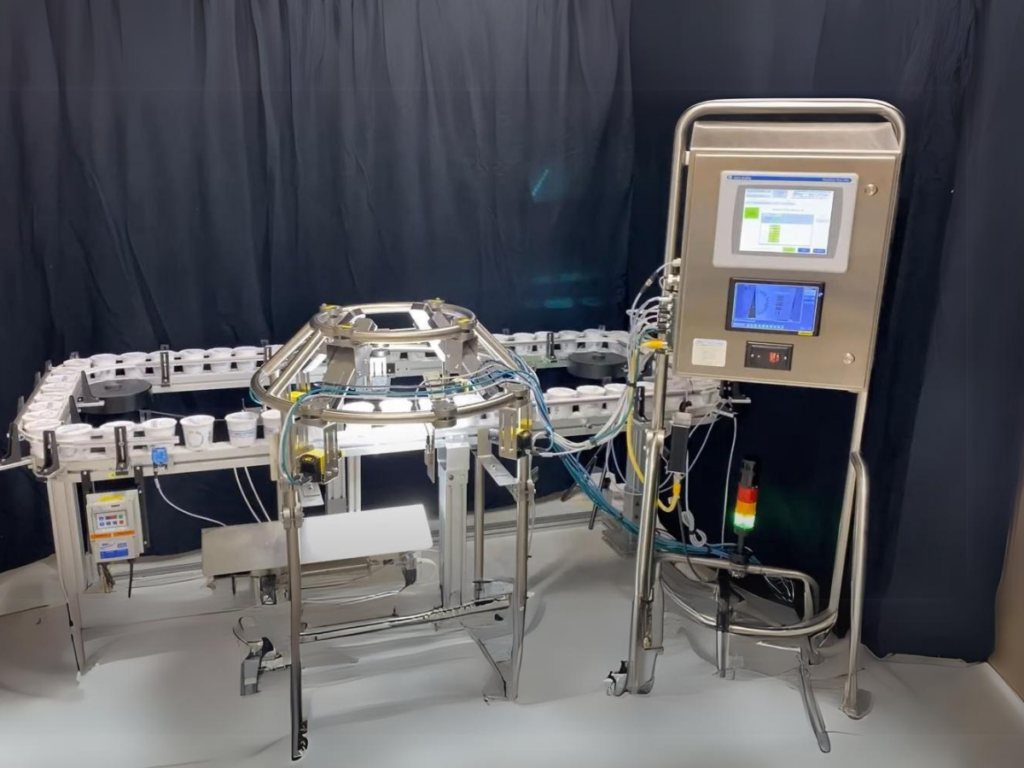Automated Label Inspection Aligns with Industry 4.0 Initiatives
While many manufacturers are embracing Industry 4.0 initiatives in their processes, most have been slow to adopt advanced technologies in their label inspection operations. But, to fully reap the benefits Industry 4.0 has to offer, label inspection should also be automated with Industry 4.0-friendly technologies. However, until recently, a reliable, user-friendly label inspection system was difficult to find. This blog will outline the benefits of Industry 4.0, discuss the ways automated label inspection can align with Industry 4.0 initiatives and highlight a new label inspection machine that overcomes the obstacles previously associated with automating these processes.
What’s the Big Deal About Industry 4.0?

Industry 4.0 is defined as the integration of smart technologies into manufacturing and industrial processes, such as automation, robotics, smart sensors, machine vision and data analytics, that work together to provide data and information that can be used to increase plant uptime, productivity, efficiency and quality.
When incorporating Industry 4.0 into a manufacturing facility, manual processes are typically automated using IIoT-enabled robotics or automated equipment that collect and analyze data and information that impacts production. Operators and technicians can then use this data to make informed decisions about the equipment and manufacturing processes in real- or near-time in order to optimize processes, increase throughput, minimize downtime and improve quality.
Where Does Label Inspection Fit with Industry 4.0?
Machine vision-based label inspection uses advanced technologies, such as cameras and image processing algorithms, to evaluate and interpret visual information. These smart, modern systems analyze images and video of packages and labels on a moving line, identify defects, ensure consistency and accuracy and improve quality standards with high levels of speed and efficiency.
As Industry 4.0 initiatives are intended to make processes more efficient and improve quality, the capabilities of advanced packaging and label inspection systems align nicely with these goals and should be included in this automation trend as it provides a number of benefits, such as:
- Increased accuracy: By automating the label inspection process, defect detection becomes more reliable, accurate and consistent than manual inspections as automation is more adept at finding defects that may be overlooked due to human fatigue, inconsistent judgment and/or the inability of human eyesight to identify minor flaws.
- Reduced costs: Because automated label inspection systems will detect flaws with higher levels of reliability and consistency earlier in the process, problems on the line can be identified and addressed faster, reducing costs associated with waste and rework and preventing costly mistakes and recalls by identifying issues before products leave the facility.
- Higher efficiency: Automation is always faster and more efficient than manual labor. In addition, as automated label inspection surpasses human capabilities in accuracy, consistency and speed, the entire process is more streamlined, allowing greater throughput with fewer errors and fewer variations in quality, boosting process efficiency and effectiveness.
- Improved quality control: As automated label inspection systems can detect flaws with higher levels of accuracy and consistency than manual operations, the level of quality control will increase, providing consistent levels of quality, building trust with customers and upholding brand integrity.
A Reliable, User-Friendly Label Inspection System
While automating label inspection operations provides plenty of benefits commonly associated with Industry 4.0, many manufacturers have been slow to adopt this automation trend because it was often difficult to find a system that was capable of reliably detecting flaws and offered simplified system setup.
However, the Control Reliable Inspection System (CRIS) 360 Compact Series from Sensors Integration is a viable solution. The system, which features machine vision products from DataSensing, is a verification system designed to handle the demands of inspecting round, touching and randomly oriented products. The CRIS system uses Sensors Integration’s fail-to-safe inspection to ensure that flawed items are rejected from the line by assuming that all products should be rejected until positively verified to ensure safety and accuracy.
The time and date track-and-trace feature allows users to capture logs of every interaction of personnel and every product change, as well as every component and system issue that arises. This track-and-trace methodology permits tracking of errors and changes in the system.
With integrated wiring, the system offers plug-and-play functionality for fast, easy installation without field wiring. Further, system setup is simplified as well, thanks to Allen-Bradley/Rockwell PLC and HMI platforms that provide high-quality and reliable operation. Parameters can be set and programs can be installed using the HMI which offers intuitive touchscreen functionality.
The CRIS system brings all the capabilities of Industry 4.0 functionality to label inspection operations, including:
- The ability to log product changes, rejects and other impactful information
- Track-and-trace functionality for errors and employee interactions
- Automated fail-to-safe verification of label integrity
- Automated rejection of defective labels
Thanks to these features, the CRIS 360 Compact has the ability to change the way manufacturers approach label inspection, offering precision, efficiency, reliability and improved product and package quality. For more information on how the CRIS 360 Compact can help bring your label inspection up to date with current automation trends and Industry 4.0 initiatives, please contact Sensors Integrated, a Tavoron Company.
